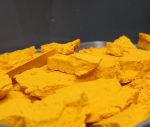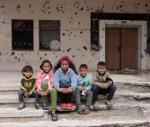You are here
Help Indian now
May 11,2021 - Last updated at May 12,2021
BOSTON – When I was growing up in northern India’s Kashmir Valley, my physician father would often accompany me when I received my annual vaccinations. I used to ask him how vaccines worked and where they were developed. After explaining the basic biology of the human immune system, my father would highlight how vaccines were the result of global efforts, with scientists and firms around the world working meticulously to ensure that all who received them were protected.
Today, only global action can address the ongoing COVID-19 crisis in India, where the number of daily cases recently exceeded 400,000 (a world record), and more than 245,000 people have died. Epidemiological models from the Institute for Health Metrics and Evaluation at the University of Washington project that infections in India will continue to grow exponentially, peaking in mid-May, and that the country’s total COVID-19 death toll could eventually top one million. While the implications for India are dire, global policymakers would be reckless to think that the impact will be limited to one country.
That is because the more the coronavirus spreads and replicates in India, the more it will mutate. Uncontrolled circulation of the virus will lead to the emergence of novel variants that can prolong the pandemic. The B.1.617 variant responsible for the carnage in India has already been observed in 19 other countries, including the United States. Recent reports also suggest that this variant can potentially evade the immune response, which would further exacerbate the strain on health systems. In addition, we do not yet know how much protection currently approved COVID-19 vaccines can provide against B.1.617, which could threaten the effectiveness of global vaccination campaigns.
Worryingly, the emergence of this variant also threatens vulnerable health systems in other low-resource countries, including India’s neighbours, Pakistan and Bangladesh, which have high population densities, insufficient intensive-care capacity and ventilators, and current COVID-19 vaccination rates below 5 per cent. Healthcare capacity is also severely limited in poorer countries in Africa and in South America, which is still recovering from the unchecked spread of the Brazil variant. If B.1.617 can cause so much damage in India – a country with moderate health-system capacity – its spread could devastate less well-equipped countries.
India’s travails represent a sudden and sharp reversal. The country supplies more than 60 per cent of vaccines globally, and it was supposed to lead efforts to manufacture COVID-19 vaccines for numerous countries. But with the new variant crushing India’s health system, it is unclear how long it will take to increase production capacity. India is currently running out of COVID-19 vaccines, and the Serum Institute of India – the world’s largest vaccine manufacturer – is unable to boost production for the time being. Economists were already projecting that low-resource countries may not achieve widespread COVID-19 vaccine coverage until 2023. The current crisis will further impede global post-pandemic recovery.
The international community must now join forces and develop a collective approach to support India in this crucial phase, not only as a moral imperative, but also because the health of other countries’ populations and economies are at stake. Governments can take several steps to mitigate the impact.First, the US, which has lost almost 600,000 citizens to COVID-19 (more than any other country), should play a leading role. Although President Joe Biden’s administration has promised to donate 60 million doses of the Oxford-AstraZeneca vaccine, recent reports suggest that it could take up to two months to deliver them. This process needs to be expedited. The US should also lead efforts to share the raw materials required to manufacture COVID-19 vaccines to help increase production capacity in India.
Second, the international community should join the US in supporting a worldwide waiver of intellectual property (IP) related to COVID-19 supplies, including vaccines – a move that India and South Africa have long advocated at the World Trade Organisation. With less than 2 per cent of Indians fully vaccinated, the urgency of the waiver cannot be overstated. And as Jeffrey D. Sachs recently explained, there are mechanisms for maintaining pharmaceutical innovation while promoting vaccination efforts in India and elsewhere, including compensating IP holders and limiting the scope and duration of any waiver.
Top of Form
Bottom of Form
Countries should also coordinate with the World Health Organisation to increase India’s health-system capacity. China, which built a hospital in five days when infections surged in the country earlier this year, can advise on how to scale up capacity. Nigeria and the US can provide technical assistance in converting large sports facilities into COVID-19 patient-isolation units in order to reduce the burden on hospitals.
Countries that have partly recovered from the pandemic should also share oxygen concentrators and ventilators. And international professional medical organizations can combine their resources and develop protocols to deliver essential supplies, including oxygen, personal protective equipment, and medications.
As some countries finally start to emerge from the COVID-19 crisis, policymakers should not forget the pandemic’s most important lesson: no country is safe until every country is safe. While India’s crisis has highlighted the global nature of public health, it has also presented an opportunity to demonstrate once again the benefits of international collaboration.
Junaid Nabi, a senior fellow at the Aspen Institute, is a member of the Working Group on Regulatory Considerations for Digital Health and Innovation at the World Health Organisation.












